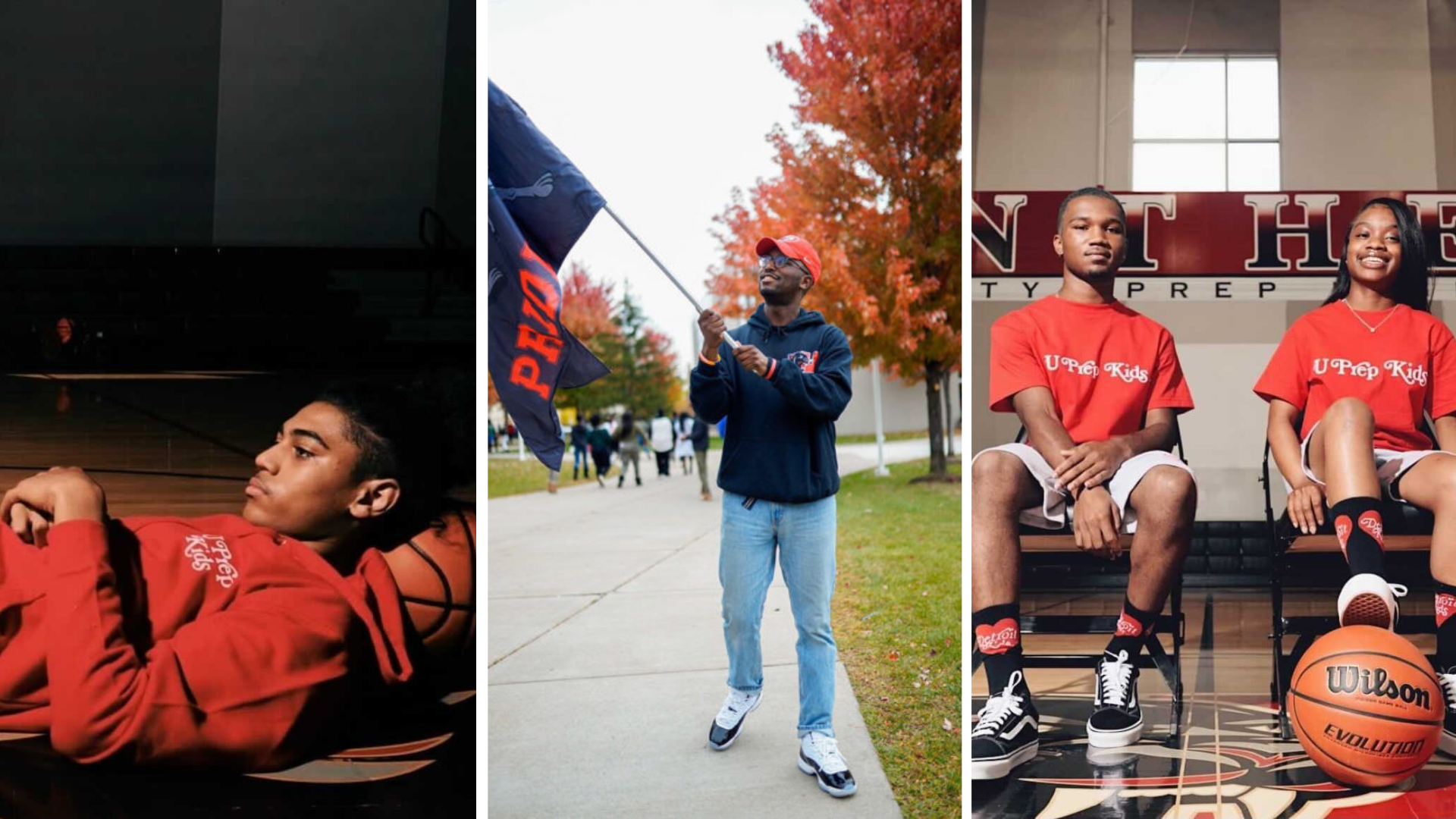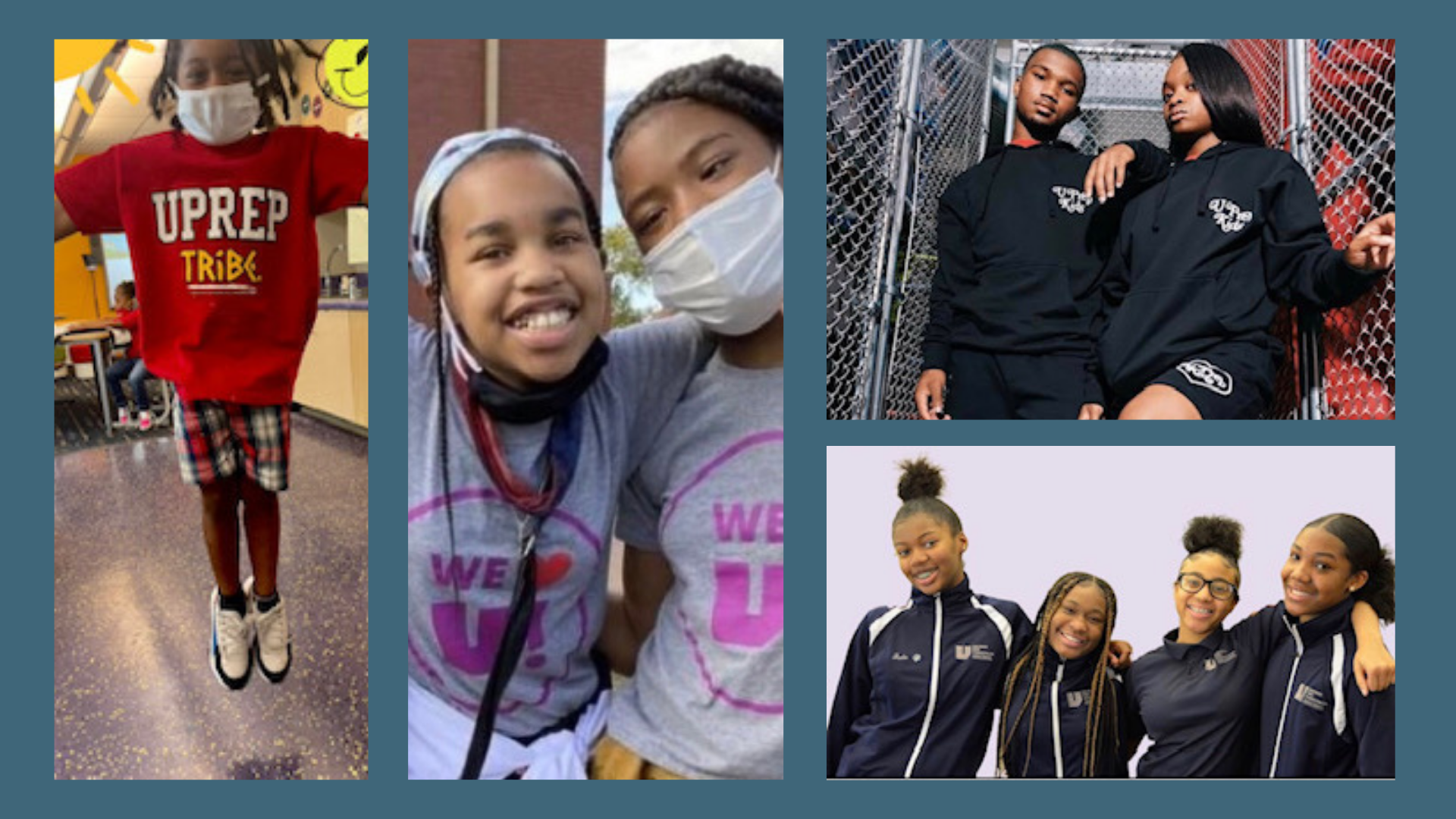
Recently, University Prep Schools (UPrep Schools) - a charter operator in Detroit - announced a big change to their dress code, relaxing their uniform policy to encourage and empower students to embrace their individual identities. Like many other charter schools, UPrep was a big believer in school uniforms, and the transition to this new policy did not happen overnight - so how did we get here?
University Prep Art & Design High School (UPAD), formerly Henry Ford Academy: School for Creative Studies, started the domino effect of putting this topic in front of leaders with the question 'why do we have uniforms?' While there were differing answers to that question, it was clear they were tapping into a new way of thinking. Most notably, these students ultimately pushed for greater flexibility, and their impact would later be seen far beyond the walls of their high school, across the entire UPrep Schools district.
Rewind nearly six years ago, and a group of passionate high school students at UPAD began knocking on the doors of their school administration team, ready to share some honest feedback about their educational experience. Amongst their feedback was a simple question: “How can you expect us to truly embrace the creativity of an art school if we have to wear school uniforms, and can’t express ourselves through our bodies?”
For School Director, Curtis Lewis, this feedback intersected with another project that also examined many of the “status quo” policies that most of us associate with school. The UPAD High School team was working with New York University on building a culturally responsive curriculum, and as that work unfolded, Curtis began to see how things like uniforms could hinder their mission of creating independent, critical-thinking scholars who were prepared to be successful in the world.
In all honesty, I was a huge proponent of uniforms - it wasn’t until we got this feedback and began going through the project with NYU that I started to look at the policy through a different lens. What did it mean for black kids in the city seeing white kids in the suburbs who don’t have to wear uniforms? Did we really believe that students could only be successful and well-behaved if we policed their bodies? Was it fair to restrict students’ self expression today, when many of the reasons uniforms became popularized were based on activities and challenges we faced decades ago?”
- Dr. Curtis Lewis, Chief of Teaching and Learning, UPrep Schools
Examining the history of school uniforms also reveals some dark roots. They can be traced back to the first Native American boarding schools and were a key representation of how European immigrants colonized and forced assimilation onto communities of color. In the 1990s, school uniforms were encouraged as an answer to the violence seen predominantly in urban schools related to gangs and competing for designer fashion. The idea was to remove choice in clothing from the classroom to put “learning and values back into school.” But with that one mission, to remove choice, was this policy in alignment with UPrep’s mission to foster independence and creativity? The short answer: no.
When you take the time to listen to the voice of our children, and empower them to engage in real topics such as the dress code, the unavoidable question becomes “what role does dress have in the learning process."
- Danielle Jackson, CEO, UPrep Schools
What then unfolded at UPAD High School were lots of conversations to gather feedback about a potential change - all the way from the leadership level, to the school’s educators, to parents and even students. It was important to Curtis and his team that they brought everyone along together on this journey, hearing their voices and getting buy-in along the way.
Gradually, the UPAD High School team began evaluating the policy to make small changes. The first year, they moved away from the strict belt, slacks, and dress shoes, only requiring students to wear the UPrep polo. The second year, they began creating the now iconic “swag,” including hoodies, beanies, shirts, etc. - all items that still promoted school pride, but better aligned with the comfort students preferred. Now, students simply have to wear an item of school spirit, but have complete agency over the rest of their style.
Andre Criswell, now Athletic Director for UPrep Schools, was the Dean of Culture at UPAD High School when these conversations began, and he has distinct memories about that passionate bunch of students who called for change.
As Dean of Culture, these conversations heavily impacted my role. These students had feedback for more than just uniforms - from cell phone usage, to curriculum, behavior and more. I remember feeling overwhelmed, but also feeling proud. Here were these kids, who were eager to make changes that represented their beliefs, community and personality - and we kept pushing them to think outside the box, so we couldn’t be mad. It was up to us as educators to recognize that education is a collaborative journey between students and us, and that means sometimes you have to examine policies and ask “why?”
- Andre Criswell, Athletic Director, UPrep Schools

Fast forward to 2020, a new, liberal dress code policy change is being implemented across all of the schools in the UPrep network, and each school is creatively thinking about what that means for the students in their building. Clare McKenna is now the School Director for UPAD Middle School - but back when these conversations began at the High School, she was an English teacher, watching with pride as students and educators co-drove meaningful change. She became a strong advocate for empowering students with agency over their dress code.
As a woman, I know what it’s like to have my body policed by society, and as we began having these conversations, it really got me thinking - rarely do students of color (which is the majority of our scholars) get to show up as themselves, feeling comfortable and safe in their skin and in their fashion. If we can create that safe space for them in our schools, that is amazing.”
- Clare McKenna, School Director, UPAD Middle School
In the middle school space, students had a fierce debate determining what their dress code would entail. They landed on a compromise - students can wear whatever they want on the bottom - jeans, leggings, etc. - and spirit wear on top. Students even have competitions at each grade level to identify their “grade shirt” - so they can see their own creativity reflected in the spirit wear. The response - students are OBSESSED with the change.
Looking out across the charter world, school uniforms are very common, especially in our urban communities. So what is the future of the uniform? How can other schools examine their policies and foster conversation to determine what is best for their students, educators and families?
No one way of thinking is truly acceptable anymore. In order to establish community, to make sure voices are heard, to foster environments where education-seeking and knowledge are happening at all levels - you have to be open minded and willing to evaluate and make change.”
- Andre Criswell, Athletic Director, UPrep Schools
These Providers on K-12 Access & Equality
Michigan's Charter School Association
123 W Allegan, Ste 750
Lansing, MI 48933
Ph: (517) 374-9167
No Comments Yet
Let us know what you think